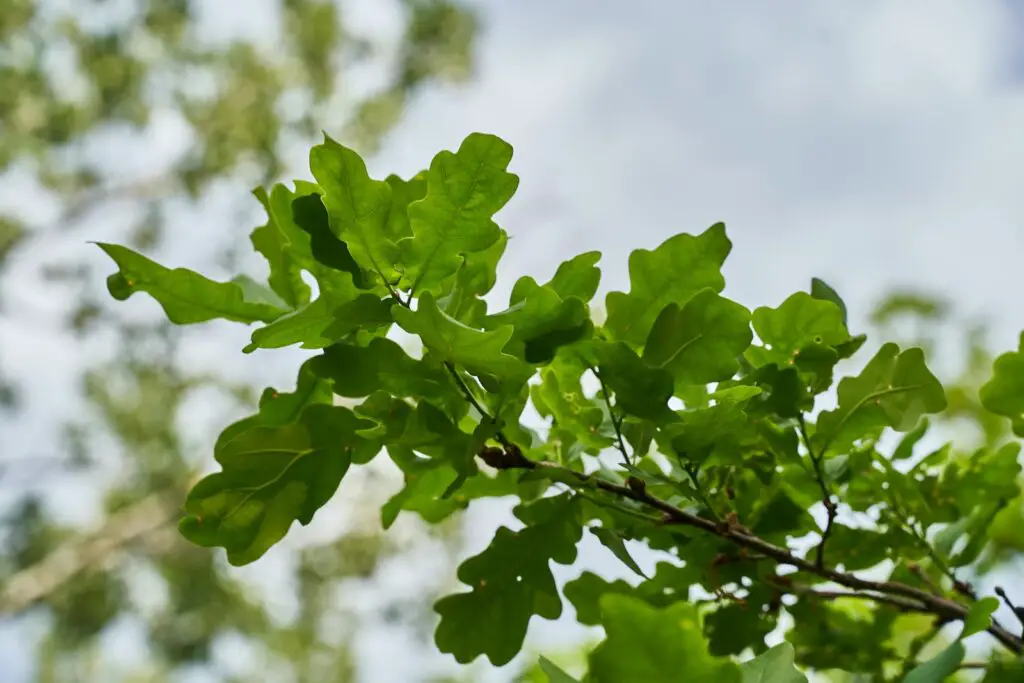
Oak trees are some of the most iconic trees in the world, known for their sturdy trunks, sprawling branches, and beautiful foliage. However, many people may not know exactly what an oak tree leaf looks like, despite having seen them countless times in parks and forests.
The leaves of an oak tree are typically large, with a distinctive shape that sets them apart from other tree species. They are usually between 2 and 8 inches long, with a width that varies depending on the specific type of oak tree. Most oak tree leaves have a lobed shape, with a series of rounded or pointed protrusions extending out from the central vein.
One of the most recognizable features of oak tree leaves is their deep green color, which can vary in shade depending on the season and the amount of sunlight they receive. Additionally, oak tree leaves are often covered in a fine layer of tiny hairs, which can help protect them from insects and other pests. Understanding the unique characteristics of oak tree leaves can help people better appreciate the beauty and complexity of these majestic trees.
Table of Contents
Characteristics of an Oak Tree Leaf
Oak tree leaves are known for their unique shape and texture. They are typically large and have a lobed shape, with the number of lobes varying depending on the species of oak tree. Some oak tree leaves may have as few as three lobes, while others may have up to 10 or more.
The lobes of oak tree leaves can be either rounded or pointed, and they may have bristle-tipped teeth or smooth edges. The edges of the leaves themselves may be smooth or toothed, and they may have a wavy margin or indentations.
The shape of oak tree leaves can also vary depending on the species. Some oak tree leaves are long and narrow, while others are more oval or rounded. The texture of the leaves can range from smooth to slightly fuzzy or hairy.
Oak tree leaves are typically attached to a stem, which can also vary in size and shape depending on the species of oak tree. The stem may be short or long, and it may be smooth or slightly rough to the touch.
Overall, oak tree leaves are easily recognizable due to their distinctive shape and texture. Whether lobed or unlobed, toothed or smooth, they are an important part of the oak tree’s unique beauty and ecological significance.
Types of Oak Trees and Their Leaves
White Oak Leaves
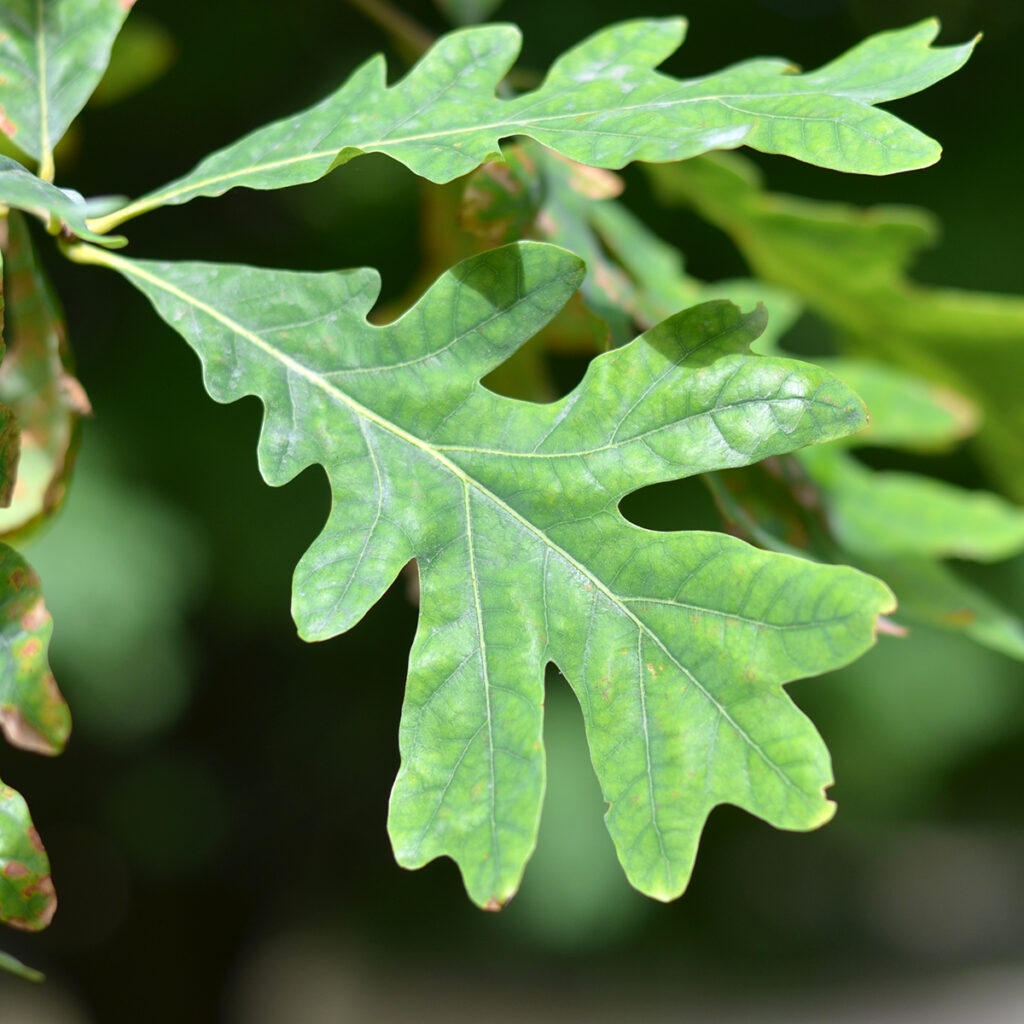
White oak leaves are known for their rounded lobes with smooth edges. They typically have between 5 and 9 lobes, with each lobe being rounded and deep. The leaves are dark green in color and can grow up to 9 inches long. The white oak tree is common in the northern hemisphere, including North America, Asia, and Europe. The scientific name for the white oak is Quercus alba.
Red Oak Leaves
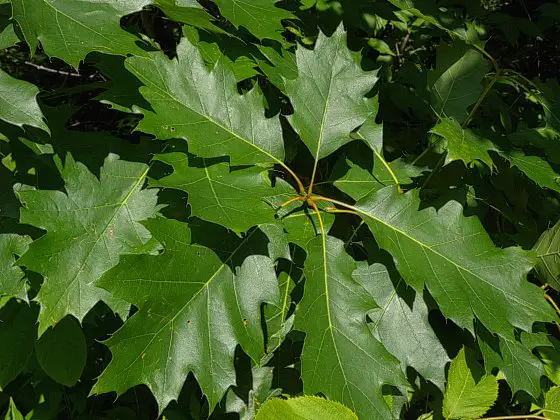
Red oak leaves are known for their pointed lobes with bristle tips. They typically have between 7 and 11 lobes, with each lobe being pointed and shallow. The leaves are dark green in color and can grow up to 11 inches long. The red oak tree is common in the northern hemisphere, including North America, Asia, and Europe. The scientific names for the red oak are Quercus coccinea and Quercus rubra.
Black Oak Leaves
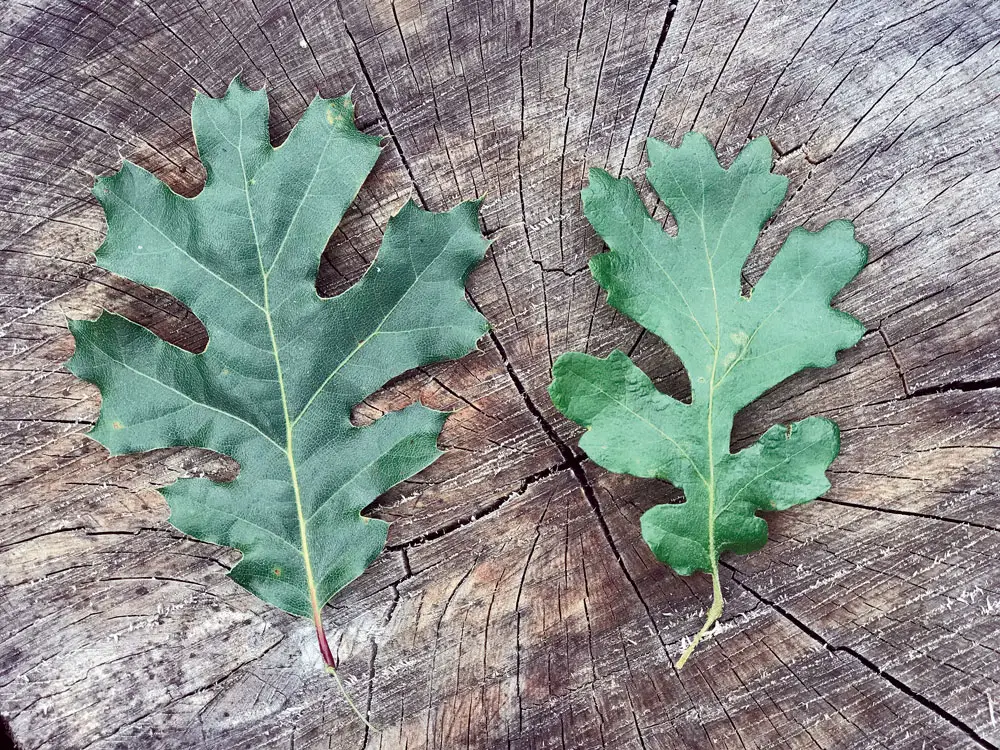
Black oak leaves are known for their deeply lobed edges with pointed tips. They typically have between 5 and 7 lobes, with each lobe being pointed and deep. The leaves are dark green in color and can grow up to 10 inches long. The black oak tree is common in North America, particularly in the eastern and central regions. The scientific name for the black oak is Quercus velutina.
Live Oak Leaves
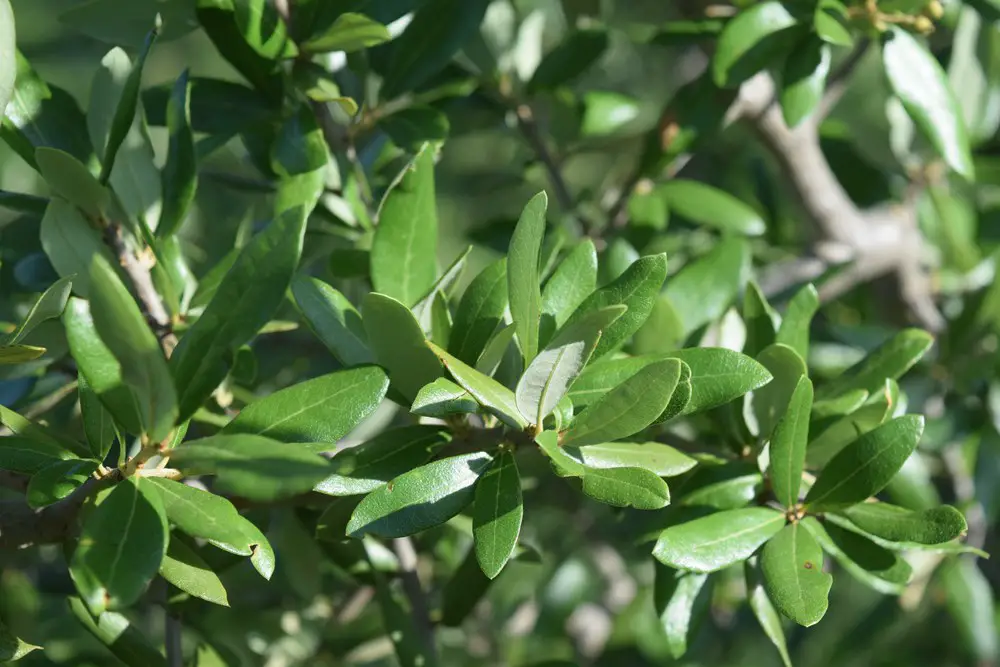
Live oak leaves are known for their elongated shape with smooth edges. They typically have between 3 and 4 lobes, with each lobe being elongated and shallow. The leaves are dark green in color and can grow up to 5 inches long. The live oak tree is common in the southern United States, particularly in coastal regions. The scientific name for the live oak is Quercus virginiana.
Pin Oak Leaves
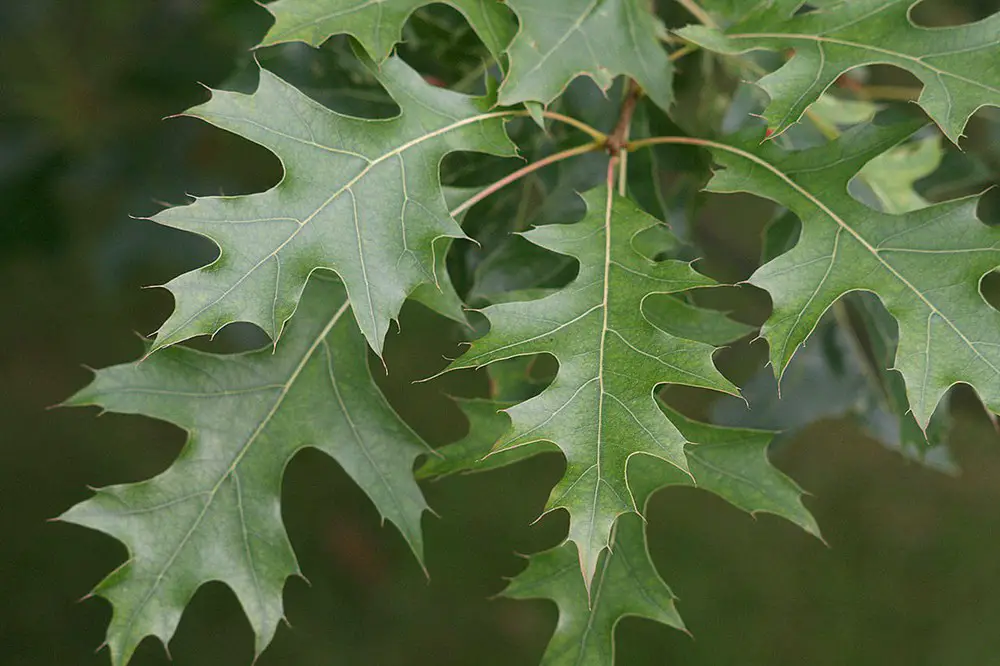
Pin oak leaves are known for their deeply lobed edges with pointed tips. They typically have between 5 and 7 lobes, with each lobe being pointed and deep. The leaves are dark green in color and can grow up to 6 inches long. The pin oak tree is common in North America, particularly in the eastern and central regions. The scientific name for the pin oak is Quercus robur.
Other Oak Species Leaves
There are many other species of oak trees with unique leaf shapes and characteristics. Some of these species include the bur oak, chestnut oak, water oak, post oak, willow oak, overcup oak, swamp chestnut oak, and laurel oak. Each of these species has its own unique characteristics that make it easily identifiable.
The Role of Leaves in an Oak Tree’s Life
Leaves play a crucial role in the life of an oak tree. They are the primary site of photosynthesis, the process by which the tree converts sunlight into energy. This energy is used to power the tree’s growth and development, as well as to produce the carbohydrates and other compounds that it needs to survive.
In addition to their role in photosynthesis, leaves also serve as a means of water regulation. Through tiny pores on their surface called stomata, leaves are able to take in carbon dioxide and release oxygen while also regulating the amount of water that enters and exits the tree. This process helps to maintain the tree’s water balance, which is essential for its survival.
Leaves also contribute to the strength and stability of the tree. As they grow, they produce a network of veins that help to support the weight of the tree’s canopy and distribute nutrients throughout the tree. Additionally, the leaves themselves provide a physical barrier that helps to protect the tree from damage caused by wind, rain, and other environmental factors.
Finally, leaves play a role in the production of hardwood, which is one of the most valuable and durable building materials available. As the tree grows and matures, the leaves produce the energy and nutrients that are needed to produce the lignin and cellulose that make up the tree’s wood. This process takes many years, but the end result is a strong and resilient material that can be used for a wide range of applications.
Overall, leaves are an essential part of an oak tree’s life, providing the energy, water, and support that it needs to survive and thrive.
Identifying Oak Trees by Their Leaves
Oak trees are known for their distinctive leaves, which are easily recognizable once you know what to look for. Leaf identification is an important skill for anyone interested in trees, and oak tree leaf identification is no exception. Here are some key characteristics to look for when identifying oak trees by their leaves:
Leaf Shape
Oak tree leaves are typically lobed, meaning they have deep indentations or “fingers” extending from the central vein of the leaf. The number of lobes can vary depending on the species of oak, but most have between 5-9 lobes. Some oak trees, such as the pin oak, have more deeply lobed leaves, while others, such as the white oak, have less deeply lobed leaves.
Leaf Edges
The edges of oak tree leaves are typically smooth, but can also be serrated or toothed. The edges can also vary depending on the species of oak. For example, the edges of the leaves of the red oak are often pointed and bristle-tipped, while the edges of the leaves of the white oak are rounded and smooth.
Leaf Color
Oak tree leaves are typically green, but can vary in shade depending on the species of oak and the time of year. Some oak trees, such as the red oak, have leaves that turn a deep red or brown in the fall, while others, such as the white oak, have leaves that turn a lighter shade of brown.
Leaf Size
Oak tree leaves can vary in size depending on the species of oak. For example, the leaves of the northern red oak can be up to 8 inches long, while the leaves of the white oak are typically between 4-7 inches long.
Overall, oak tree leaf identification can be made easier with the use of an oak tree leaf identification chart, which can help you compare and contrast the different characteristics of oak tree leaves. With practice, you can become confident in your ability to identify oak trees by their leaves.
The Significance of Oak Trees in Landscapes
Oak trees are an essential part of many landscapes, providing both aesthetic value and ecological benefits. These trees are known for their large, broad leaves, which can vary in shape and size depending on the species. Oak trees are also known for their hard, durable wood, which has been used in construction and furniture-making for centuries.
In addition to their beauty and practical uses, oak trees play a crucial role in many ecosystems. They provide habitat for a variety of wildlife, including birds, insects, and mammals. Oak trees also produce acorns, which are an important food source for many animals.
In terms of landscaping, oak trees are often used as shade trees, providing relief from the sun on hot summer days. They are also commonly planted as ornamental trees, adding beauty and character to gardens, parks, and other outdoor spaces.
While oak trees are generally low-maintenance and easy to care for, they do require some attention to ensure their health and longevity. This may include regular pruning, fertilization, and pest control measures.
Overall, oak trees are a valuable and important part of many landscapes, providing beauty, shade, and ecological benefits that make them a worthwhile addition to any outdoor space.
Evergreen vs Deciduous Oak Trees
Oak trees are one of the most recognizable trees in the world, with over 600 species found across the globe. One of the main distinguishing features of oak trees is their leaves, which can vary greatly between species. Some oak trees are evergreen, while others are deciduous, shedding their leaves each fall.
Evergreen oak trees, as the name suggests, keep their leaves year-round. This means that they are always green and photosynthesizing, even during the winter months. Some examples of evergreen oak trees include the Holm oak (Quercus ilex) and the live oak (Quercus virginiana). These trees are often found in warmer climates, where they can thrive in mild winters.
Deciduous oak trees, on the other hand, lose their leaves each fall. This is an adaptation to the colder temperatures and shorter days of winter, allowing the tree to conserve energy and survive until spring. Some examples of deciduous oak trees include the white oak (Quercus alba) and the red oak (Quercus rubra). These trees are found in a wide range of climates, from temperate to subtropical.
While evergreen oak trees may seem like the better choice for year-round greenery, there are benefits to both types of trees. Deciduous oak trees provide a stunning display of fall foliage, with leaves turning shades of red, orange, and yellow before falling to the ground. Evergreen oak trees, on the other hand, provide a consistent source of shade and shelter for wildlife throughout the year.
Overall, whether an oak tree is evergreen or deciduous depends on the species and the climate in which it grows. Both types of trees have their own unique benefits and characteristics, making them a valuable addition to any landscape.